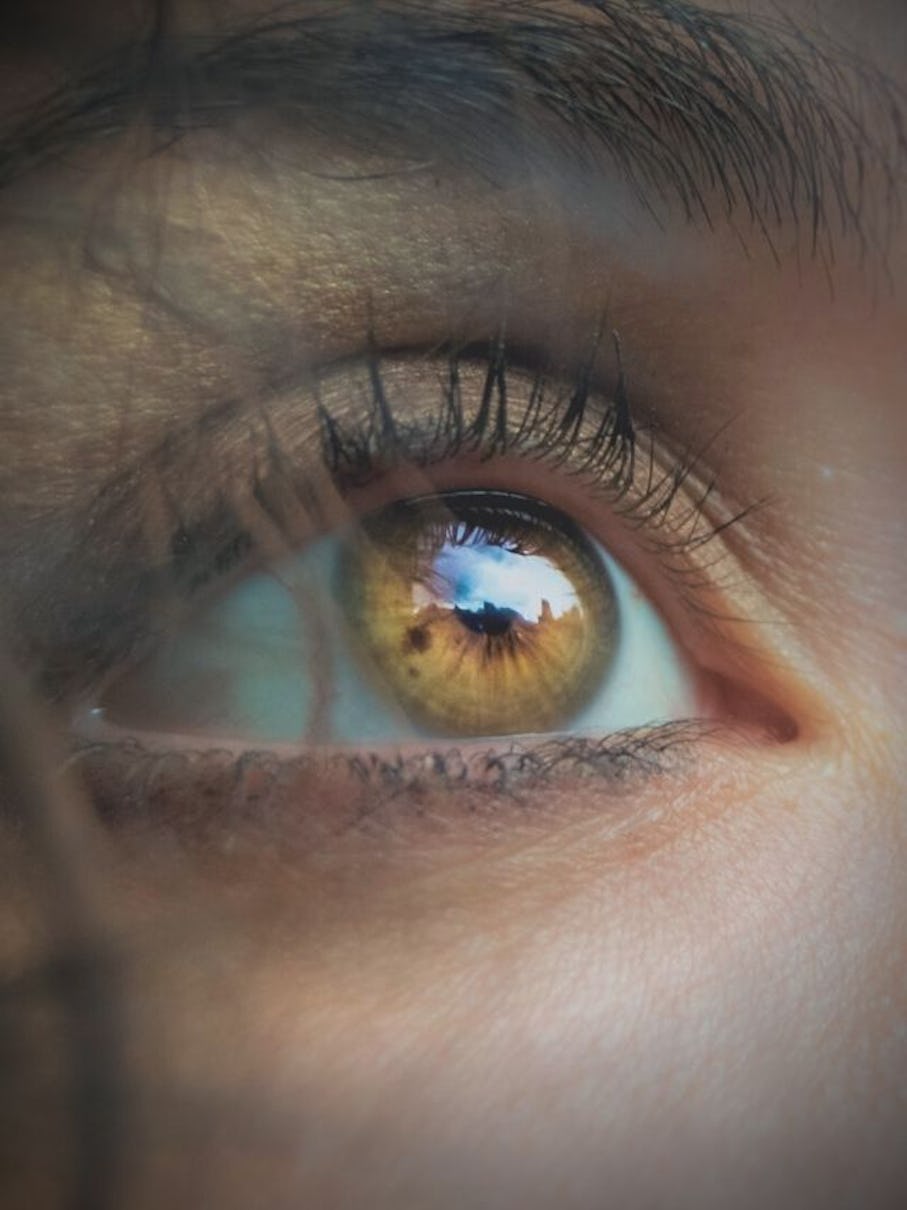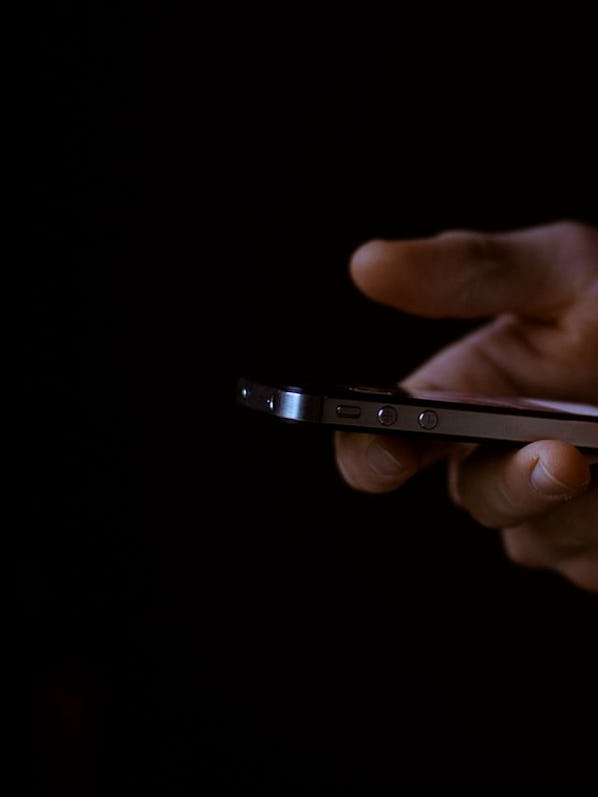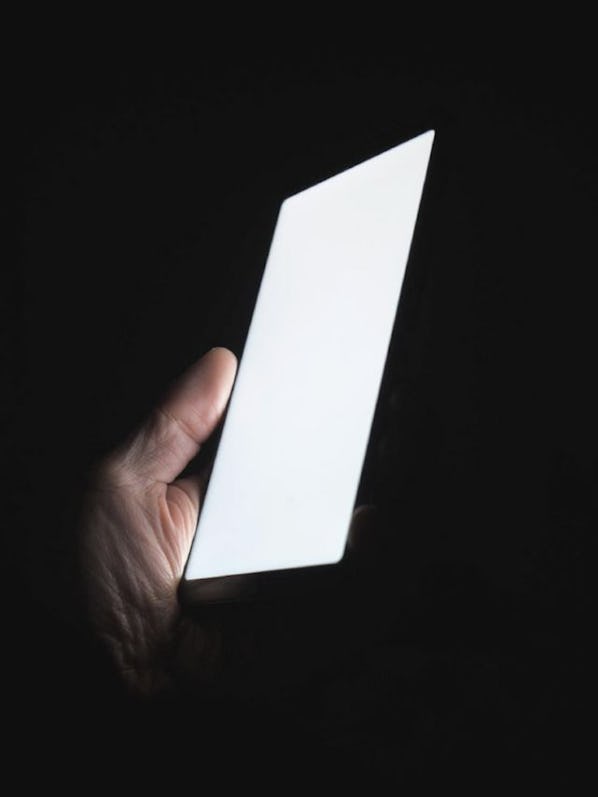
Dry Eyes - Lasting Relief

Contact Lenses - making them more comfortable

Hay Fever - Relieve Itchy, Watery Eyes
Digital Eye Strain (DES) and Computer Vision Syndrome (CVS) are interchangeable. They’re terms used to describe the visual discomfort and eye-related problems that result from prolonged use of digital devices (e.g. laptops, smartphones, and tablets). In this article, we refer to DES - but we’re referring to both.
The prolonged use of these devices can strain the eyes, leading to various symptoms (detailed below). The syndrome can cause discomfort, eye strain, and decreased visual performance, reducing productivity and quality of life. It affects millions worldwide who spend several hours a day looking at screens.
Computer Vision Syndrome (CVS) and Digital Eye Strain (DES) are the same. The symptoms of both conditions include eye strain, blurred vision, headaches, dry eyes, and neck and shoulder pain.
CVS is also called Digital Eye Strain (DES) because it is caused by the prolonged use of digital devices such as computers, tablets, and smartphones. The terms are often used interchangeably to describe the discomfort experienced by people who spend extended periods in front of digital screens.

Prolonged use of digital devices requires sustained visual attention and can result in visual fatigue and discomfort.
The bright screens and backlight of digital devices can also cause glare, which can strain the eyes and cause pain. Glare from bright lighting or the sun can cause eye strain and fatigue.
The rapid change in light intensity on computer screens can cause discomfort and headaches.
Incorrect lighting in the workplace can lead to eye strain and fatigue.
Poor posture while using computers can cause neck, back, and eye strain.
The close proximity of screens to the eyes, small screens, high-resolution screens, small text size, and limited viewing angles can all contribute to the development of CVS and digital eye strain.
Dry eyes can result from prolonged use of digital devices, leading to discomfort and irritation, such as watery, burning, and/or itchy eyes. Extended periods of screen time cause our blink rate to decrease significantly, reducing the natural lubrication and moisture of the eyes. Blinking is crucial as it helps distribute tears evenly across the eye surface, keeping them moist and free from dust and other irritants.
Moreover, the angle and distance at which we view our screens can also contribute to dry eyes. Looking downward at a screen causes our eyelids to partially close, reducing the blink rate and tear production.
In conclusion, prolonged digital device usage can lead to dry eyes due to a reduced blink rate and suboptimal viewing angles. Regular breaks, adjusting screen positioning, and using lubricating eye drops to alleviate dryness and discomfort are essential.

Position your screen to avoid glare from overhead lights or windows. Close the blinds on your windows or switch to lower-watt bulbs in your desk lamp. If you can’t change the lighting to minimise glare, buy a glare filter for your screen.
Maintaining a good posture while using computers can reduce neck, back, and eye strain. If you’re looking back and forth between a screen and reference materials, keep the materials where you can see them with minimal head movement. Avoid creating a setup where you’re swivelling your head, too.
For the best angle, the centre of the screen, tablet or phone should be 20 to 28 inches from your eyes and 4 to 5 inches below eye level.
Regular breaks and looking away from the screen can reduce eye strain and fatigue. Every 20 minutes, look away from your screen and focus on something 20 feet away for 20 seconds. This will give your eyes a chance to refocus. And after two hours of continual computer use, rest your eyes for 15 minutes.
Screen settings such as brightness, contrast, and text size can reduce eye strain and fatigue. The brightness of your screen should not be left at the default setting - but adjusted according to the brightness of the room that you’re in. Watch eye surgeon's video showing you how to adjust your screen's brightness.
Eye Drops, and Sprays can help lubricate the eyes and reduce dryness and discomfort. Always use preservative-free drops and sprays - as this prevents long-term sensitivity.
People usually blink about 18 times a minute. But they blink at a quarter of this rate on digital screens - about 6 times a minute. This increases the chance of developing dry eyes. To reduce this risk, blink more often and freshen your eyes periodically with lubricating eye drops or sprays.
Keep air vents or drafts from blowing into your face and drying out your eyes. Low humidity in a room can also dry eyes out faster than usual - try adding a humidifier. Dust, too, can irritate eyes and accumulate on your screen - decreasing the screen’s sharpness and may cause eye strain.
When choosing a digital device, consider factors such as screen size, text size, and screen brightness to ensure that you’re not causing unnecessary strain on your eyes. Also, it’s worth noting that some devices, such as e-readers, cause less strain on the eyes than others, such as smartphones and tablets.
Consult an optometrist or ophthalmologist if your symptoms are persistent or worsen.
The duration of Computer Vision Syndrome symptoms can vary depending on the severity of the condition and the individual’s response to treatment. In most cases, taking regular breaks from prolonged screen time and following the above tips for preventing CVS can help relieve symptoms within a few days to a week.
However, if symptoms persist, it is important to consult an eye doctor to rule out any underlying vision problems contributing to the issue.

In short, no. Digital Eye Strain (DES) should not cause permanent damage to your eyes.
However, it’s important to take breaks and practice good eye care habits when using screens for extended periods (to reduce the risk of developing symptoms of DES). See above.
If your symptoms or discomfort persist or worsen, see an optometrist or ophthalmologist to rule out any underlying eye conditions. They’ll be able to diagnose correctly and recommend steps to help manage your symptoms.

One of the lesser-discussed symptoms of menopause or perimenopause is the increased susceptibility to Computer Vision Syndrome (CVS) or Digital Eye Strain (DES). As oestrogen levels decline during menopause, women often face a reduction in tear production, leading to dry eyes. This dryness can exacerbate the symptoms of CVS, such as itching, burning, and blurred vision, especially in an era where digital screen usage is pervasive.
Furthermore, the age-related decrease in accommodation, or the eye’s ability to change its focus from distant to near objects, can intensify the strain experienced during prolonged screen time. Hormonal fluctuations during menopause also affect the eye’s meibomian glands, responsible for the oily layer of tears, further contributing to dry eye syndrome and discomfort.
Preventive measures, such as regular eye check-ups, lubricating eye drops, and following the 20-20-20 rule, can mitigate the risks.

The brightness of your screen should not be left at the default setting - but adjusted according to the brightness of the room that you’re in.
This a handy tip. Adjust the screen brightness to match a piece of white paper (in your room or space). Place the sheet of white paper next to the screen, and adjust the display brightness until it roughly equals the paper’s brightness.
Constant exposure to screens has given rise to Computer Vision Syndrome (CVS). CVS encompasses a range of eye and vision-related problems resulting from prolonged screen use. The high-energy visible (HEV) blue light emitted by digital devices can strain the eyes, leading to symptoms like dryness, redness, irritation, and blurred vision. The close proximity at which we view these screens and the often sub-optimal lighting conditions further exacerbate the strain.
Modern lifestyles, characterised by extended screen time, force the eyes to constantly focus and refocus as we switch between screens, read digital text, or engage in visually intensive tasks. Over time, this continuous effort can tire the eye muscles, leading to discomfort and potential long-term vision issues.

Glare is a common cause of eye strain and fatigue. It occurs when bright, artificial or natural light reflects off the screen and enters the eyes directly - forcing your eyes to work harder to see the screen clearly, leading to eye strain and fatigue. It can also cause squinting, leading to headaches and further discomfort. Position screens away from direct light sources to minimise glare, use matte screen protectors, and adjust indoor lighting.

Holding screens too close to the eyes forces them to work harder to maintain focus, leading to eye strain.
Devices with small screens often require more effort to read text and view images, causing the eyes to strain.
High-resolution screens display sharper images and text but can also make the eyes work harder to focus on the finer details.
Reading small text requires the eyes to focus more intensely, which can lead to fatigue and strain over time.
Limited viewing angles can cause the eyes to adjust frequently to maintain a clear image, increasing strain.
Beware of the over-hyped marketing of some brands selling blue light glasses and screen filters. Based on the limited studies, blue light may cause digital eye strain and may disrupt sleep. While some evidence supports this - more research is needed.
Recent studies indicate that blue light glasses do not help with CVS or CVS symptoms.
Good eye care habits (listed above) will help manage and reduce the risk of Computer Vision Syndrome (CVS) and Digital Eye Strain (DES).

Computer vision syndrome (CVS) is not a disease or a permanent condition but rather a group of symptoms caused by prolonged use of digital devices such as computers, tablets, and smartphones. Therefore, CVS cannot be cured, but it can be managed and prevented.
Manage and prevent Computer Vision Syndrome (CVS) by adjusting your workspace, taking regular breaks, and using preservative-free drops and sprays.
Underlying vision problems such as nearsightedness, farsightedness, or astigmatism can also contribute to CVS, which can be treated with prescription glasses, contact lenses or laser eye surgery.

It is important to note that there is no specific test for CVS. However, a qualified optometrist or ophthalmologist can perform a comprehensive eye exam to identify any underlying vision problems, including the following:
